| Listing 1 - 10 of 12 | << page >> |
Sort by
|
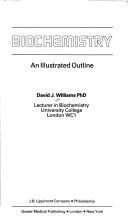
ISBN: 0397446993 9780397446995 Year: 1988 Publisher: London : Gower Medical Pub.,
Abstract | Keywords | Export | Availability | Bookmark
 Loading...
Loading...Choose an application
- Reference Manager
- EndNote
- RefWorks (Direct export to RefWorks)
Biochemistry --- Biochimie --- Biochemistry. --- Biological chemistry.
Book
ISBN: 2803800144 9782803800148 Year: 1988 Publisher: Bruxelles Paris Nauwelaerts Maloine
Abstract | Keywords | Export | Availability | Bookmark
 Loading...
Loading...Choose an application
- Reference Manager
- EndNote
- RefWorks (Direct export to RefWorks)
Biochemie --- Biochemistry --- Biochimie --- Biological chemistry --- Biologie clinique --- Chemistry [Biological ] --- Chemistry [Physiological ] --- Fer dans l'organisme --- Ijzer in het lichaam --- Interne geneeskunde --- Iron in the body --- Klinische biologie --- Médecine interne --- Iron --- Anemia --- Iron Deficiency --- metabolism --- Metabolism
Book
ISBN: 1349098566 134909854X 0333452852 Year: 1988 Publisher: Basingstoke : The Macmillan Press Ltd.,
Abstract | Keywords | Export | Availability | Bookmark
 Loading...
Loading...Choose an application
- Reference Manager
- EndNote
- RefWorks (Direct export to RefWorks)
The books in this series comprise review articles and descriptions of methods of immunoassay, which are not reliant on radioisotopes and reflect the growing importance of immunoassay technologies.
Immunology. --- Biochemistry. --- Science, Humanities and Social Sciences, multidisciplinary. --- Biochemistry, general. --- Biological chemistry --- Chemical composition of organisms --- Organisms --- Physiological chemistry --- Biology --- Chemistry --- Medical sciences --- Immunobiology --- Life sciences --- Serology --- Composition --- Immunology. Immunopathology --- Immunoassay --- Technique. --- Antigens --- Immunoglobulins --- Immunology --- Immunodiagnosis
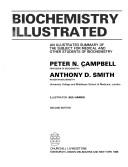
ISBN: 0443034540 9780443034541 Year: 1988 Publisher: Edinburgh: Livingstone,
Abstract | Keywords | Export | Availability | Bookmark
 Loading...
Loading...Choose an application
- Reference Manager
- EndNote
- RefWorks (Direct export to RefWorks)
General biochemistry --- Biochemistry --- Biochemistry. --- 577.1 --- #TWER:BIOM --- Biological chemistry --- Chemical composition of organisms --- Organisms --- Physiological chemistry --- Biology --- Chemistry --- Medical sciences --- Chemical bases of life. Biochemistry and bio-organic chemistry generally --- Composition --- outlines. --- 577.1 Chemical bases of life. Biochemistry and bio-organic chemistry generally --- Outlines. --- Biochemistry - Outlines, syllabi, etc. --- Biochemistry - outlines
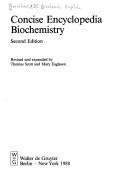
ISBN: 3110116251 0899254578 9783110116250 Year: 1988 Publisher: Berlin : de Gruyter,
Abstract | Keywords | Export | Availability | Bookmark
 Loading...
Loading...Choose an application
- Reference Manager
- EndNote
- RefWorks (Direct export to RefWorks)
General biochemistry --- Biochemistry --- Biochemistry. --- 577.1 <03> --- #WSCH:FYS3 --- #WSCH:MONO --- Chemical bases of life. Biochemistry and bio-organic chemistry generally--Naslagwerken. Referentiewerken --- Chemistry --- Dictionaries. --- Encyclopedias. --- dictionaries. --- 577.1 <03> Chemical bases of life. Biochemistry and bio-organic chemistry generally--Naslagwerken. Referentiewerken --- Biological chemistry --- Biochimie --- Dictionaries --- dictionaries --- Dictionnaires --- Biochemistry - Dictionaries. --- Biochemistry - dictionary
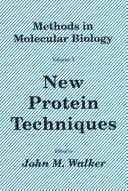
ISBN: 0896031268 9780896031265 1592594905 Year: 1988 Publisher: Totowa, NJ : Humana Press : Imprint: Humana,
Abstract | Keywords | Export | Availability | Bookmark
 Loading...
Loading...Choose an application
- Reference Manager
- EndNote
- RefWorks (Direct export to RefWorks)
577.112 --- Molecular biology --- -Proteins --- -#WSCH:WBIO --- 577.112 Proteins --- Proteins --- Proteids --- Biomolecules --- Polypeptides --- Proteomics --- Molecular biochemistry --- Molecular biophysics --- Biochemistry --- Biophysics --- Systems biology --- Research --- -Methodology --- Methodology. --- #WSCH:WBIO --- Research&delete& --- Methodology --- Biochemistry. --- Biochemistry, general. --- Biological chemistry --- Chemical composition of organisms --- Organisms --- Physiological chemistry --- Biology --- Chemistry --- Medical sciences --- Composition
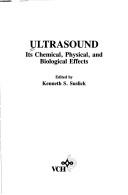
ISBN: 0895733285 3527266453 Year: 1988 Publisher: Weinheim VCH
Abstract | Keywords | Export | Availability | Bookmark
 Loading...
Loading...Choose an application
- Reference Manager
- EndNote
- RefWorks (Direct export to RefWorks)
Biochemistry --- Ultrasonic waves --- Biochimie --- Ultrasons --- Chemistry, Physical. --- Ultrasonics. --- 534.321.9 --- 57.043 --- 615.837 --- Supersonic waves --- Waves, Ultrasonic --- Sound-waves --- Ultrasonics --- Biological chemistry --- Chemical composition of organisms --- Organisms --- Physiological chemistry --- Biology --- Chemistry --- Medical sciences --- Ultrasonic --- Ultrasonic Waves --- Physical Chemistry --- Chemistries, Physical --- Physical Chemistries --- Ultrasonic vibrations --- Physical and other mechanical factors. --- Therapy using sound. Ultrasonic therapy --- Composition --- 615.837 Therapy using sound. Ultrasonic therapy --- 57.043 Physical and other mechanical factors. --- 534.321.9 Ultrasonic vibrations --- Chemistry, Physical --- Physical and other mechanical factors
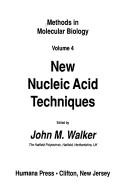
ISBN: 9780896031272 9781592594917 0896031276 1592594913 Year: 1988 Publisher: Totowa, NJ : Humana Press : Imprint: Humana,
Abstract | Keywords | Export | Availability | Bookmark
 Loading...
Loading...Choose an application
- Reference Manager
- EndNote
- RefWorks (Direct export to RefWorks)
Molecular biology --- Nucleic acids --- Nucleotide sequence --- Research --- Methodology. --- Animal Biochemistry --- Human Anatomy & Physiology --- Health & Biological Sciences --- Methodology --- Molecular biochemistry --- Molecular biophysics --- Analysis, Nucleic acid sequence --- Analysis, Nucleotide sequence --- Base sequence (Nucleic acids) --- DNA sequence --- Nucleic acid sequence analysis --- Nucleotide sequence analysis --- RNA sequence --- Sequence, Nucleotide --- Polynucleotides --- Life sciences. --- Biochemistry. --- Life Sciences. --- Biochemistry, general. --- Biological chemistry --- Chemical composition of organisms --- Organisms --- Physiological chemistry --- Biology --- Chemistry --- Medical sciences --- Biosciences --- Sciences, Life --- Science --- Composition
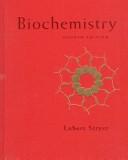
ISBN: 0716719207 071671843X 9780716718437 9780716719205 Year: 1988 Publisher: New York, NY : Freeman,
Abstract | Keywords | Export | Availability | Bookmark
 Loading...
Loading...Choose an application
- Reference Manager
- EndNote
- RefWorks (Direct export to RefWorks)
biochemie --- General biochemistry --- Biochemistry --- Biochimie --- biochemistry --- Biochemistry. --- 577.1 --- 577.1 <035> --- Biological chemistry --- Chemical composition of organisms --- Organisms --- Physiological chemistry --- Biology --- Chemistry --- Medical sciences --- Chemical bases of life. Biochemistry and bio-organic chemistry generally --- Chemical bases of life. Biochemistry and bio-organic chemistry generally--Grote handboeken. Compendia --- Composition --- Biochemie --- Moleculaire biochemie --- Biochemie. --- Moleculaire biochemie. --- 577.1 <035> Chemical bases of life. Biochemistry and bio-organic chemistry generally--Grote handboeken. Compendia --- 577.1 Chemical bases of life. Biochemistry and bio-organic chemistry generally --- biologie --- moleculaire biologie --- BIOCHEMISTRY --- PROGRAMMED INSTRUCTION --- TEXTBOOKS
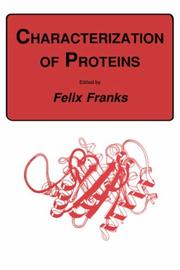
ISBN: 0896031098 9786610836024 1280836024 1592594379 Year: 1988 Publisher: Clifton, New Jersey : Humana Press,
Abstract | Keywords | Export | Availability | Bookmark
 Loading...
Loading...Choose an application
- Reference Manager
- EndNote
- RefWorks (Direct export to RefWorks)
Proteins are the servants of life. They occur in all component parts of living organisms and are staggering in their functional var- ty, despite their chemical similarity. Even the simplest single-cell organism contains a thousand different proteins, fulfilling a wide range of life-supporting roles. Their production is controlled by the cell’s genetic machinery, and a malfunction of even one protein in the cell will give rise to pathological symptoms. Additions to the total number of known proteins are constantly being made on an increasing scale through the discovery of mutant strains or their production by genetic manipulation; this latter technology has become known as protein engineering. The in vivo functioning of proteins depends critically on the chemical structure of individual peptide chains, but also on the detailed folding of the chains themselves and on their assembly into larger supramolecular structures. The molecules and their fu- tional assemblies possess a limited in vitro stability. Special methods are required for their intact isolation from the source material and for their analysis, both qualitatively and quantitatively. Proteins are also increasingly used as “industrial components,” e.g., in biosensors and immobilized enzymes, because of their specificity, selectivity, and sensitivity. This requires novel and refined proce- ing methods by which the protein isolate can be converted into a form in which it can be utilized.
Biological techniques --- Analytical biochemistry --- Chemistry of natural organic substances --- SCIENCE --- Life Sciences / Biochemistry --- Proteins --- Physiology --- Biological Science Disciplines --- Amino Acids, Peptides, and Proteins --- Chemicals and Drugs --- Natural Science Disciplines --- Disciplines and Occupations --- Animal Biochemistry --- Human Anatomy & Physiology --- Health & Biological Sciences --- Analysis --- 577.112.8 --- -#WSCH:WBIO --- Proteids --- Biomolecules --- Polypeptides --- Proteomics --- Protein classification --- Analysis. --- isolation. --- physiology. --- 577.112.8 Protein classification --- Isolation. --- Physiology. --- Life sciences. --- Biochemistry. --- Life Sciences. --- Biochemistry, general. --- Biological chemistry --- Chemical composition of organisms --- Organisms --- Physiological chemistry --- Biology --- Chemistry --- Medical sciences --- Biosciences --- Sciences, Life --- Science --- Composition --- #WSCH:WBIO --- Analytical biochemistry. --- Analytic biochemistry --- Bioanalytic chemistry --- Bioanalytical chemistry --- Analytical chemistry --- Biochemistry
| Listing 1 - 10 of 12 | << page >> |
Sort by
|

 Search
Search Feedback
Feedback About
About Help
Help News
News